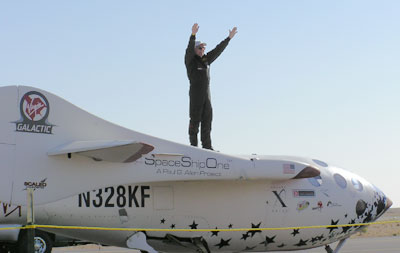Standing on the thresholdby Anthony Young
|
| Neither fame nor fortune will elude Burt Rutan and the others who have worked for him to achieve his dream have their place in history. |
Ford and the Wrights were not alone in their creative genius, of course. Others in America and Europe had been and continued to work on automobiles and airplanes of their own design in the first decade of the 20th century. These new modes of transportation grew into vast industries with profound economic impact around the world.
Is it too early to say much the same situation exists in the first decade of the 21st century with regard to space? Neither fame nor fortune will elude Burt Rutan and the others who have worked for him to achieve his dream have their place in history. I believe we stand on a new threshold of access to space, and there are several good reasons why.
Space for the common man…someday
While there are inherent risks with private citizens opting to go into space, the new physical requirements of going there and returning gently are now a proven reality. Some amusement park rides place more demands on the human body than SpaceShipOne. While significant g’s are encountered when the spacecraft’s engine kicks in, reentry is not the fiery event experienced in a capsule but is, instead, a pleasant glide back to Earth its point of departure. This fact alone bodes well for the hope of average, if physically fit, men and women to experience space for themselves. It will no longer be the domain of government-trained astronauts or cosmonauts.
The limiting factor, of course, will be the price tag. However, as Henry Ford and many others found out, the cost of transportation will drop as mass production and manufacturing efficiencies are implemented. For the foreseeable future, suborbital trips into space will only be experienced by the wealthy. When King Alfonso XIII of Spain sat in one of the Wright’s fliers, he could see airplanes were the future. Richard Branson has seen the future, and it is Virgin Galactic. We look through a glass darkly right now, but the future of a private astronaut’s license may not be so farfetched. We do indeed live in interesting times.
